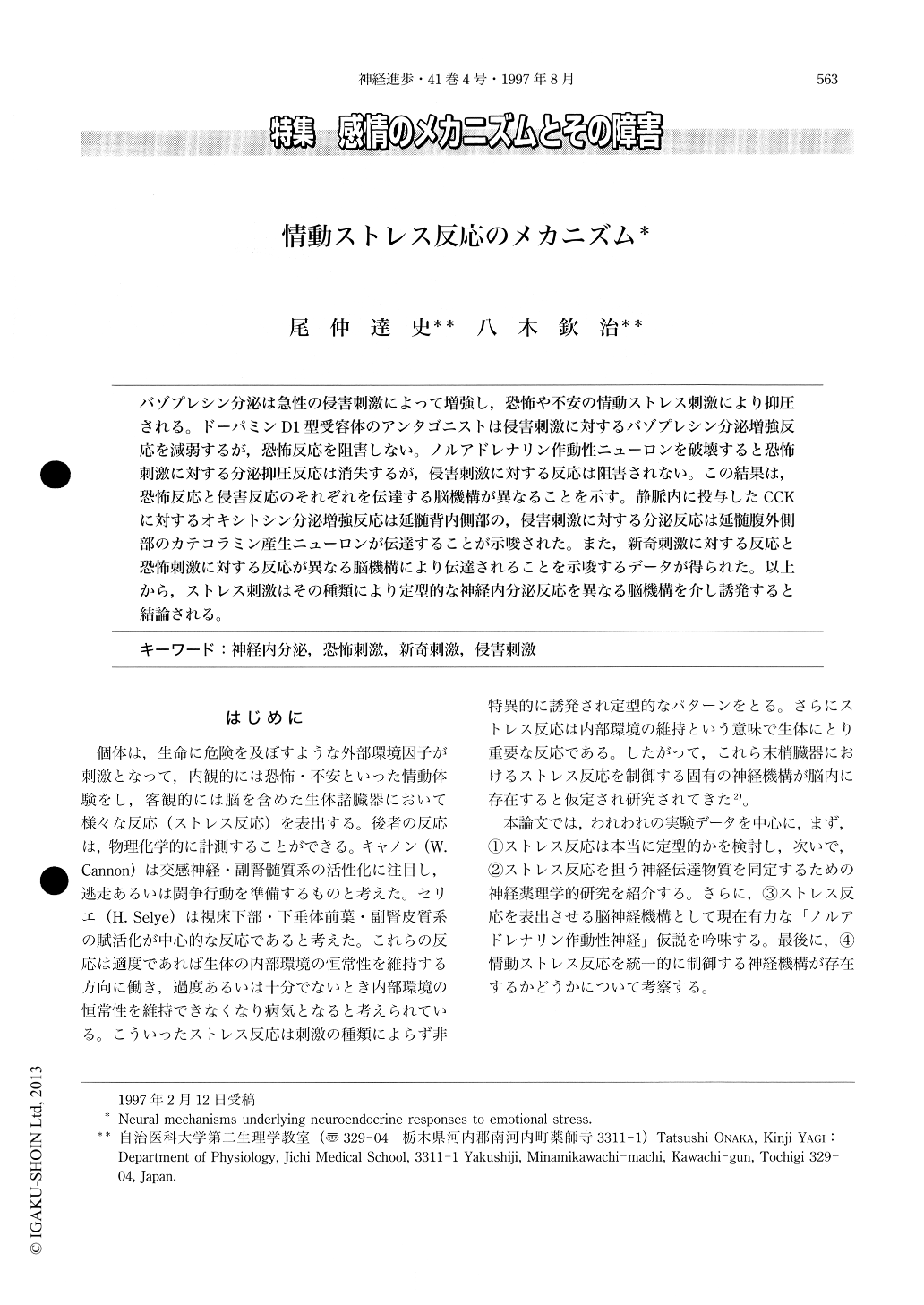Japanese
English
- 有料閲覧
- Abstract 文献概要
- 1ページ目 Look Inside
バゾプレシン分泌は急性の侵害刺激によって増強し,恐怖や不安の情動ストレス刺激により抑圧される。ドーパミンD1型受容体のアンタゴニストは侵害刺激に対するバゾプレシン分泌増強反応を減弱するが,恐怖反応を阻害しない。ノルアドレナリン作動性ニューロンを破壊すると恐怖刺激に対する分泌抑圧反応は消失するが,侵害刺激に対する反応は阻害されない。この結果は,恐怖反応と侵害反応のそれぞれを伝達する脳機構が異なることを示す。静脈内に投与したCCKに対するオキシトシン分泌増強反応は延髄背内側部の,侵害刺激に対する分泌反応は延髄腹外側部のカテコラミン産生ニューロンが伝達することが示唆された。また,新奇刺激に対する反応と恐怖刺激に対する反応が異なる脳機構により伝達されることを示唆するデータが得られた。以上から,ストレス刺激はその種類により定型的な神経内分泌反応を異なる脳機構を介し誘発すると結論される。
Noxious stimuli potentiate secretion of vasopressin and oxytocin from the neurohypophysis. On the other hand, fear-related stimuli such as intermittently applied footshocks or conditioned fear stimuli suppress vasopressin secretion and potentiate oxytocin secretion. Novel environmental stimuli also induce the suppressive vasopressin response. An opioid antagonist, naloxone, facilitated vasopressin release after noxious stimuli. Naloxone, however, did not significantly affect the suppressive vasopressin response but potentiated the oxytocin response to conditioned fear stimuli.

Copyright © 1997, Igaku-Shoin Ltd. All rights reserved.


